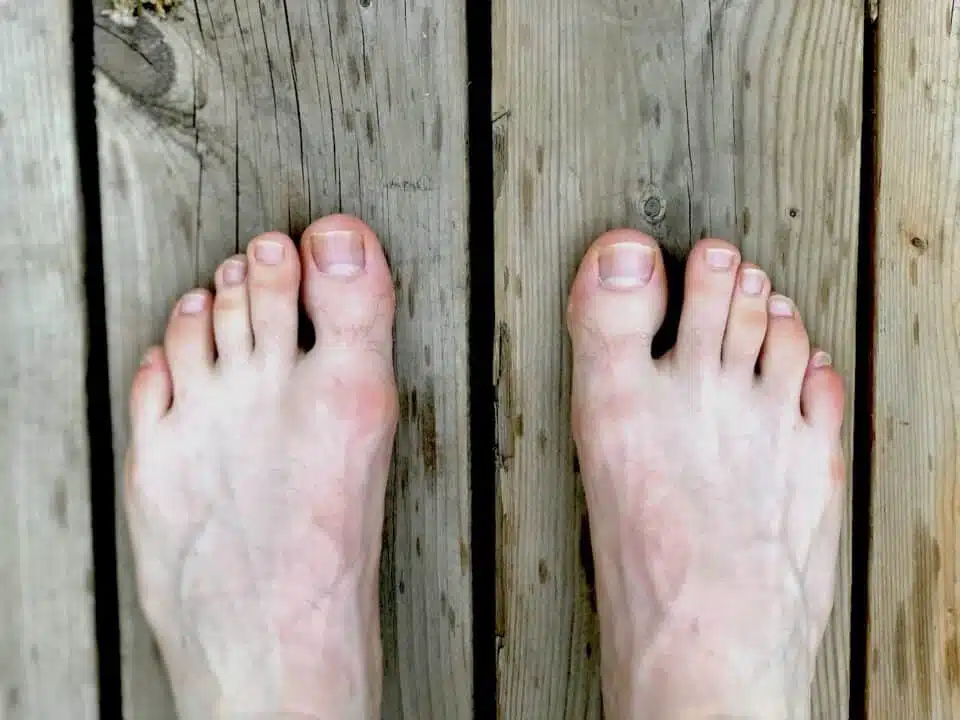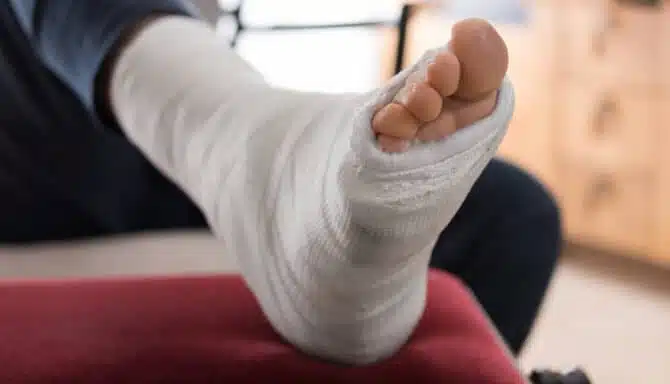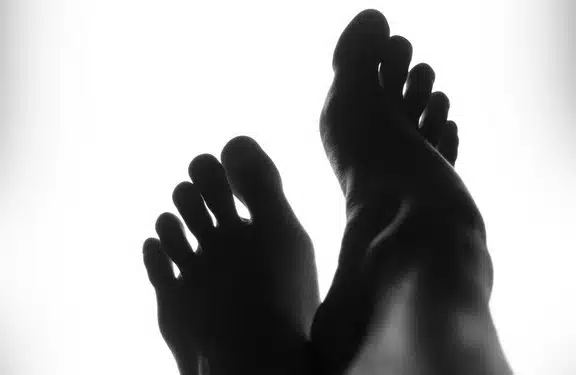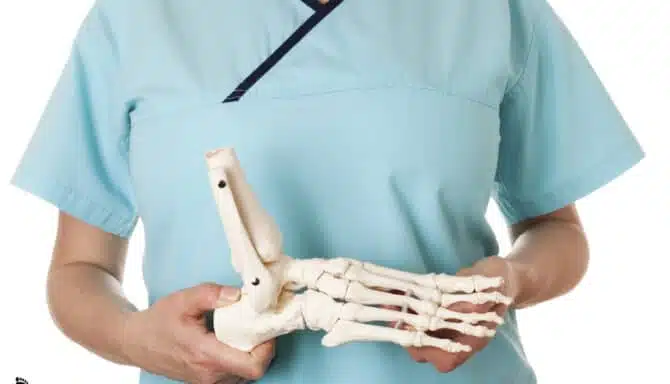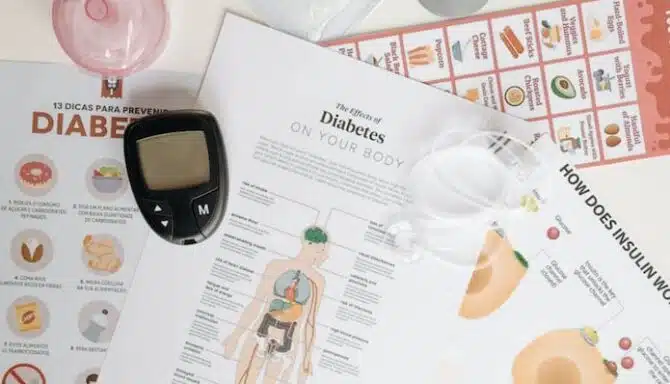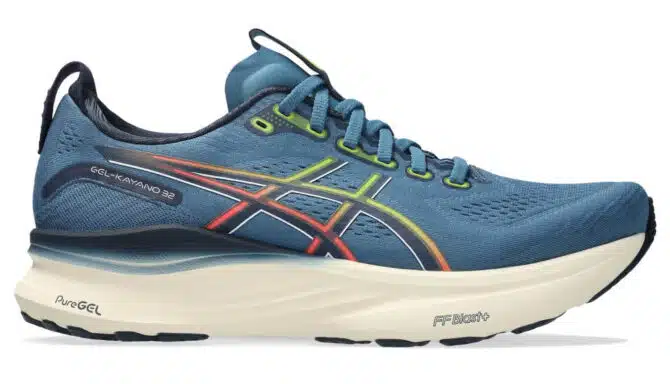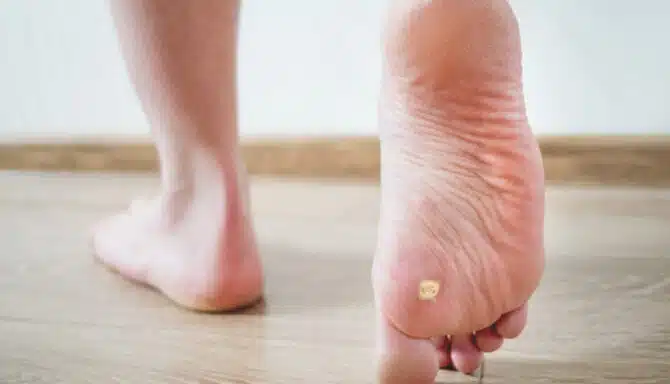It’s all in the toes.
Our toes bear the weight of the body with every step and are the foundation for our movement. The big toe specifically is the final point of contact before each step. In fact, the big toe carries the most weight of all the toes, bearing about 40% of the load.
As a result, many foot injuries and toe conditions stem from, or affect, the big toe.
Maintaining good toe health is crucial for the longevity and long-term health of your feet. There are a number of different foot conditions that can result from toe neglect. Stiff toes, for example, can lead to hallux limitus or hallux rigidus.
Below you’ll find a list of common toe conditions.
Claw Toe
A Claw Toe has an abnormal bend in both the middle joint and the joint closest to the tip of the toe.
Symptoms of claw toe include an upward extension from the joints at the ball of the foot and downward flexion at the middle joints toward the sole of your shoe. Claw toe comes in the shape of a bridge or a hump.
Early on, claw toe resembles a flexible hammertoe (see more below). However, over time, claw toes can stiffen. It’s important to address claw toe early to reverse the deformity. One such treatment is a splint or tape to hold your toes in the correct position.
Finding shoes that fit correctly is also a key preventative measure. You’ll notice through this article that many toe conditions can be prevented by wearing Proper Footwear. Additionally, you can use your hands to stretch and straighten your toes, and perform exercises including picking up marbles or a towel to strengthen local ligaments and tendons.
Subungual Hematoma
A subungual hematoma is a medical term for a Black Toenail.
A black toenail occurs when the skin below the nail is damaged. Long-distance runners are particularly susceptible to black toenails because of the friction to the top of the foot, as well as the duration of the activity.
Immediately after injuring your toe, you should follow the RICE protocol to reduce the pain and swelling: Rest, Ice, Compress and Elevation. Rest means you should stop doing any physical activity. Wrap a clean bandage around the toe to stem the blood. Put a bag of ice or a cold compress on the covered injury. Then lie down and elevate your foot by resting it on a pillow.
Turf Toe
Turf toe is a sprain of the big toe joint resulting from injury during sports activities.
This acute injury typically occurs from jamming the toe. Turf toe includes pain, swelling and limited joint movement. Following the RICE protocol – rest, ice, compression, and elevation – is beneficial. Additionally, wear stiff footwear to keep the toe at a neutral angle and isolated while walking.
The biggest concern here is either not addressing the injury, or rushing back to activity too quickly. Without the proper treatment, turf toe can turn into hallux limitus.
Hallux Rigidus

Translated to a stiff big toe, hallux rigidus is a progressive condition that stems from osteoarthritis in the big toe. It causes pain and stiffness in the joint and over time, the toe loses flexibility.
As the cartilage at the first metatarsophalangeal joint (MTP) breaks down, the metatarsal bones and the proximal bones rub together. This friction, as well as the body’s response to fill the void left by osteoarthritis results in the formation of a bone spur.
In this case, it’s important to recognize the early signs of hallux rigidus, including at its previous stage hallux limits. Work on improving the range of motion in the toes and invest in custom-made orthotics or footwear with a rocker to reduce the pressure and bend of the big toe.
Hammertoe
Hammertoe is a progressive toe condition that worsens if left untreated. In short, hammertoe is a toe deformity of one or both joints of the second, third, fourth or fifth (little) toes. You’ll see one of the toes shift and cross over another toe.
Hammertoe occurs when you wear ill-fitting shoes. Specifically, footwear that is far too small for your feet. The lack of space deforms your toes and can cause a shift in the tendons and ligaments. Fortunately, addressing the cause quickly can be extremely effective.
Treatment includes:
- Corn pads
- Stretching and strengthening your toe and toe and foot muscles
- Roomier footwear
- Custom orthotics that help reposition and take the pressure off of your toes
- Surgery
Left untreated, hammertoe can worsen and require surgery. If your toes appear bent or you are experiencing toe mobility, visit one of our licensed chiropodists (foot specialists) as soon as it’s safe to do so.
Drop-in shoe fitting for hammertoe is also offered.
Gout
Gout is a common and complex form of arthritis that often begins in the big toe.
It’s often known as the “disease of kings” or “rich man’s disease” because it’s prevalent in older men, as well as those who eat meat or seafood, drink beer, or are overweight.
It’s characterized by sudden, severe attacks of pain, swelling, redness and tenderness in the joints. Gout looks like a swollen bunion on the outside of the big toe.
To help prevent gout, you can follow these preventative measures:
- Drink plenty of fluids
- Limit or avoid alcohol
- Get your protein from low-fat dairy products
- Limit your intake of meat, fish and poultry
- Maintain desirable body weight
Remember, our bodies begin at our feet. Take proper care through the various methods mentioned in this article to prevent toe conditions from occurring.
